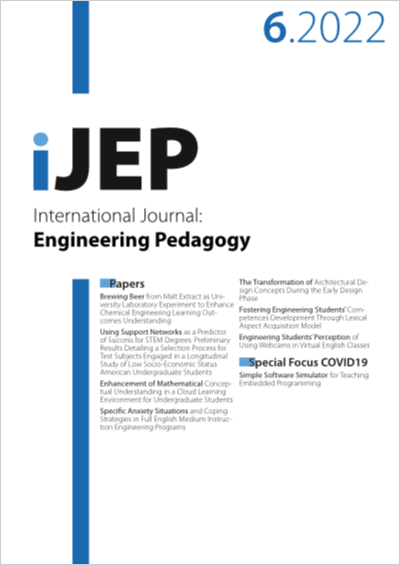Engineering Students’ Perception of Using Webcams in Virtual English Classes
DOI:
https://doi.org/10.3991/ijep.v12i6.33317Keywords:
engineering, English classes, perception, virtual, webcamsAbstract
Using webcams in virtual classes is considered as one of the most effective ways to build a sense of community and the quality of teaching and learning English through online lessons. However, whether to require learners to keep the webcams on for online learning has still been a controversial issue among teachers, learners, and administrators due to several problems. In the hope of providing a realistic view from engineering students in turning on webcams in online English lessons in higher education, this study was conducted to investigate engineering students’ perceptions of using webcams in their online English lessons. A 30-item questionnaire and in-depth structured interview were designed to collect the data from 166 engineering students. The findings reveal that both students’ and teachers’ webcams were expected to be on only when necessary. In online English lessons, most students often turned on the webcams when required by teachers. Despite facilitating interaction and understanding between teachers and students, creating a feeling of closeness, and satisfying students’ desires to see their teachers’ faces, it is essential to consider the subject’s distinctive features, students’ worries about the device's slow speed, and concerns about distracting other students when requiring both students and teachers to turn their cameras on during online English lessons.
Downloads
Published
How to Cite
Issue
Section
License
Copyright (c) 2022 Anh Tuan Pham

This work is licensed under a Creative Commons Attribution 4.0 International License.


